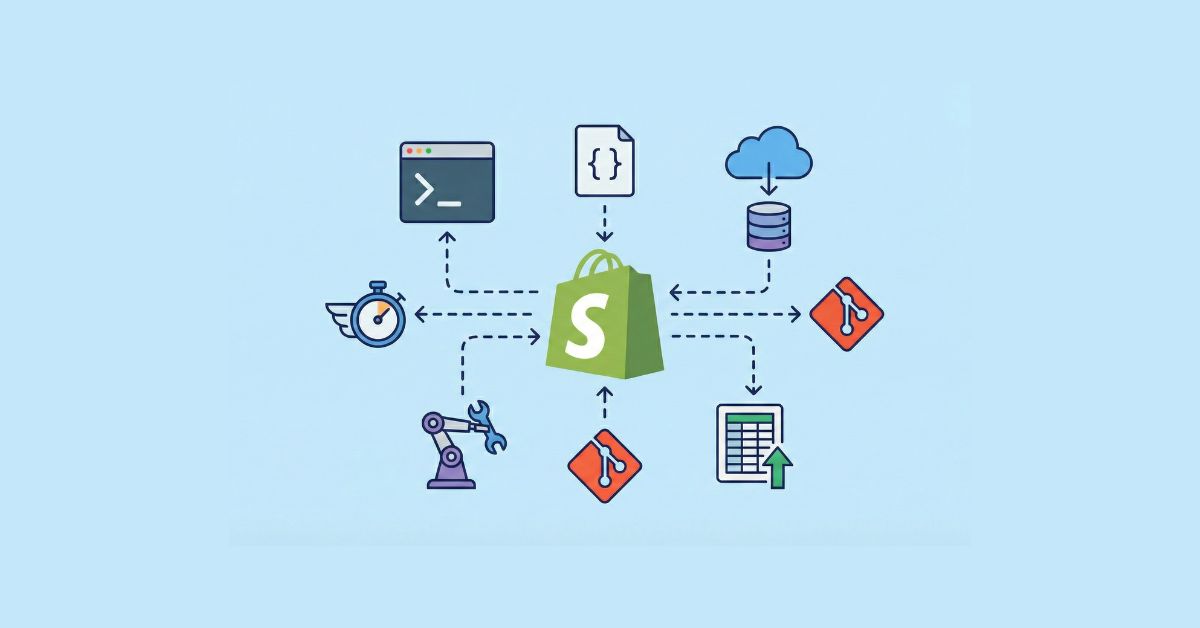Summary
The software development landscape is evolving rapidly, and .NET development tools are at the center of this transformation. As we step into 2025, businesses across industries are increasingly investing in .NET software development to build scalable, secure, and high-performing applications. From web-based platforms to desktop software and mobile apps, the versatility of .NET technologies continues to make it a preferred choice among developers.
.NET software development is not for the faint of heart; it requires particular attention to be paid to the businesses that have embraced technology. In this environment where competition is high, effectiveness has a new meaning; it is not about writing code, it is about writing the best code and in the shortest possible time. The digital environment has brought about the development of tools that will help in the minimization of errors, the automation of repetitive tasks, as well as the improvement of collaborative work.
The development of technology-aided Instruction systems has led to great innovations in learning. The combination of .NET tools along with IDEs editors, debugging utilities, and testing frameworks will not only help the users to gain a strong hands-on core .NET tools, but also will teach the users about the tools available from as simple as needed to large-scale complex needs. In this article, the focus is on the top 10 editors and tools that .NET programmers can use to sharpen their skills in the year 2025.
- What are .NET Development Tools?
- Criteria for Choosing the Best .NET Tools & Editors
- Top 10 .NET Development Tools & Editors for 2025
1. Visual Studio 2025
2. Visual Studio Code
3. JetBrains Rider
4. LINQPad
5. ReSharper
6. Postman
7. NuGet Package Manager
8. Fiddler Everywhere
9. NUnit
10. Azure DevOps - How These Tools Boost Productivity
- Future Trends in .NET Development Tools
- Final Thoughts
What are .NET Development Tools?
.NET development tools are specialized software applications or platforms designed to assist in building, testing, deploying, and maintaining applications on the .NET framework. They cater to various stages of the development cycle:
- Coding: .NET development tools offer integrated development environments depending on the complexity of the project.
- Debugging: Software services that provide quick solutions to technical problems.
- Testing: Standards are in place to ensure the quality of applications, and frameworks are used to automate the quality assurance process.
- Deployment: Platforms that offer continuous integration and delivery services.
Such tools are indispensable in .NET application development because they provide everything to the developers that allows them to do less work and, in turn, get more output.
Criteria for Choosing the Best .NET Tools & Editors
Not all .NET tools are created equal, and choosing the wrong one can slow down your development process. Here are some criteria to help you pick the right tool:
- Compatibility with .NET technologies – Ensure it supports the latest .NET versions, libraries, and frameworks you plan to use.
- Ease of integration – Look for tools that integrate smoothly with version control systems, package managers, and CI/CD pipelines.
- Cross-platform support – As applications of .NET expand to multiple devices and operating systems, tools that work seamlessly across platforms are more valuable.
- Learning curve – A feature-rich tool is great, but it should also be intuitive enough not to waste valuable time learning it.
- Community and documentation – Strong developer communities and detailed documentation ensure you can find quick solutions when needed.
- Cost and licensing – Many powerful tools are free, but some premium ones can be worth the investment if they significantly boost productivity.
Top 10 .NET Development Tools & Editors for 2025
1. Visual Studio 2025
As is the case with most .NET application development, Visual Studio is the most fully featured IDE, and it remains the most comprehensive one. The 2025 version comes with AI-powered IntelliCode, faster build times, and improved debugging features. It supports web, desktop, mobile, and cloud projects, making it an all-in-one environment for any .NET software development need.
Why it boosts productivity: Built-in Git integration, powerful project and solution refactoring, an extensive library of optional add-ins for version control, testing, documentation, and build systems allows you to work without leaving the IDE.
2. Visual Studio Code
VS Code is the go-to choice for developers who prefer a lightweight, highly customizable editor. With extensions for C#, .NET Core, and Azure, it’s capable of handling full .NET technologies projects. Its cross-platform compatibility makes it ideal for developers working on multiple operating systems.
Why it boosts productivity: Fast startup times, integrated terminal, and seamless debugging capabilities keep you focused on coding rather than setup.
3. JetBrains Rider
Rider is a cross-platform IDE by JetBrains that merges the editing power of ReSharper with a sleek, user-friendly design. It comes with a good selection of .NET tools and is well-suited for Unity and Xamarin as well as ASP.NET Core applications.
Why it boosts productivity: Especially for highly sophisticated tasks, Rider’s amazing code completion and error detection features, alongside effortless movement throughout massive codebases, are incredibly time-saving.
4. LINQPad
LINQPad is an essential utility for quickly testing LINQ queries, C# snippets, and database queries without creating a full project. It’s lightweight but incredibly powerful, especially for developers working on .NET software development that involves a lot of data handling.
Why it boosts productivity: Saves time during prototyping and experimentation by eliminating the need for a full compile cycle..
5. ReSharper
ReSharper is an enhancement for Visual Studio, which provides features such as smart code browsing and code reworking, and provides on-the-spot quality assessment. This tool is a lifesaver when developing large .NET applications, as code consistency and maintainability are paramount.
Why it boosts productivity: Helps to minimize failure in coding and performs automated processes for repetitive code restructuring.
6. Postman
While not exclusive to .NET, Postman is an invaluable tool for API development and testing. In modern .NET technologies, APIs are the backbone of communication between applications, and Postman makes designing, testing, and monitoring them far easier.
Why it boosts productivity: Automated test scripts and API collections speed up backend validation.
7. NuGet Package Manager
NuGet streamlines dependency management by permitting the inclusion of libraries and frameworks directly into projects. It is integrated into Visual Studio, meaning it is a must for the efficient management of .NET tools.
Why it boosts productivity: Package updates and dependency resolution are performed automatically.
8. Fiddler Everywhere
Fiddler is a web debugging application that inspects HTTP/S traffic, which is crucial for .NET applications that are network communication-heavy.
Why it boosts productivity: Resolving and configuration of misconfigured endpoints, slow requests, or failed calls.
9. NUnit
NUnit is a well-known testing framework that automates unit tests for .NET applications, ensuring quality standards are met before deployment.
Why it boosts productivity: Integrated into CI/CD workflows. Speeds up testing cycles.
10. Azure DevOps
With Azure DevOps, project planning, source control, build automation, and deployment can all be completed with one set of development tools. For teams collaborating around large .NET software development projects, Azure DevOps serves as a central collaboration hub.
Why it boosts productivity: Reduces release time with the help of continuous integration and continuous delivery.

Related To Read
How These Tools Boost Productivity
A well-chosen toolkit enhances every aspect of .NET application development:
Code quality improvement – Bugs are resolved before they occur with tools like Rider and ReSharper.
Faster iteration cycles – Prototyping and testing are accelerated with LINQPad and Postman.
Best collaboration – Azure DevOps and Git help streamline collaboration.
Optimized workflows – Projects can be completed as scheduled due to automated builds, testing, and deployments.
For organizations aiming for large-scale implementation, working with a trusted .NET Development Company ensures these tools are leveraged to their full potential.
Future Trends in .NET Development Tools
The future of .NET technologies is being shaped by:
- AI-assisted development: automated bug fixes and predictive code suggestions.
- Serverless and cloud: native tools: stronger Azure integration for serverless solutions.
- Cross-platform focus: support for development tools for Windows, MacOS, Linux, Android, and iOS.
Innovations coupled with a thorough understanding of the Benefits and Features of the .NET Framework will serve as a competitive advantage to the developers.
Final Thoughts
Choosing appropriate tools is crucial for the success of .NET software development projects and software .NET development tools. In this respect, comprehensive IDEs such as Visual Studio or specialized tools like LINQPad and Fiddler serve to enhance productivity.
Selecting .NET tools that meet your project requirements, seamlessly integrate with your workflow, and support the latest .NET features will help enhance the outcomes and time efficiency.
In 2025, staying relevant and keeping pace with emerging technologies will be a necessity. With the right tools, your .NET application development projects will be equipped to face the evolving challenges.







